Idea by
Ernst, Kern, Tessarz, Tratz
FAKT
Call for ideas 2016
Softspace
Softspace
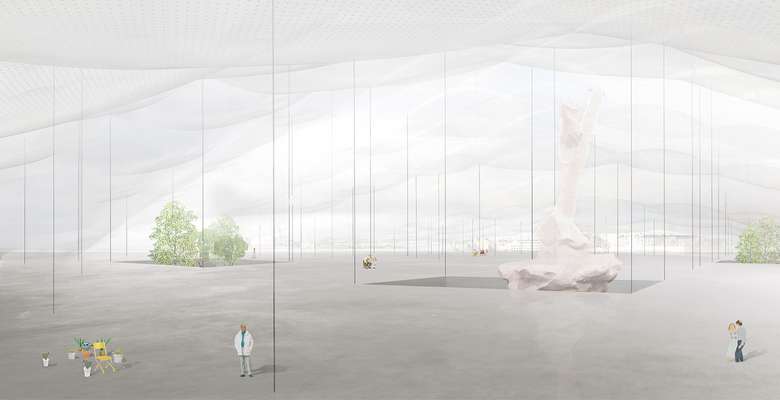
which are the necessities to create open spaces allowing for social change? to unify new or diverse social uses that until now have been separated, to create a social catalyzer? to reintroduce the notion of the sublime?
compressing program on the one hand allows for, on the other hand, large monospaces to be places of encounter and exchange, where all programs suitable for open space are arranged. the result is a dialectic spatial entity consisting of many compact spaces and one large space.
spatial landscapes, interdependent spaces, vertical permeation and poetic approaches are issues we are dealing with. redesigning the future of architecture by questioning the boarders of conventional building elements: perforated ceilings, roof as cloud, floor as landscape, structure as rhizome…
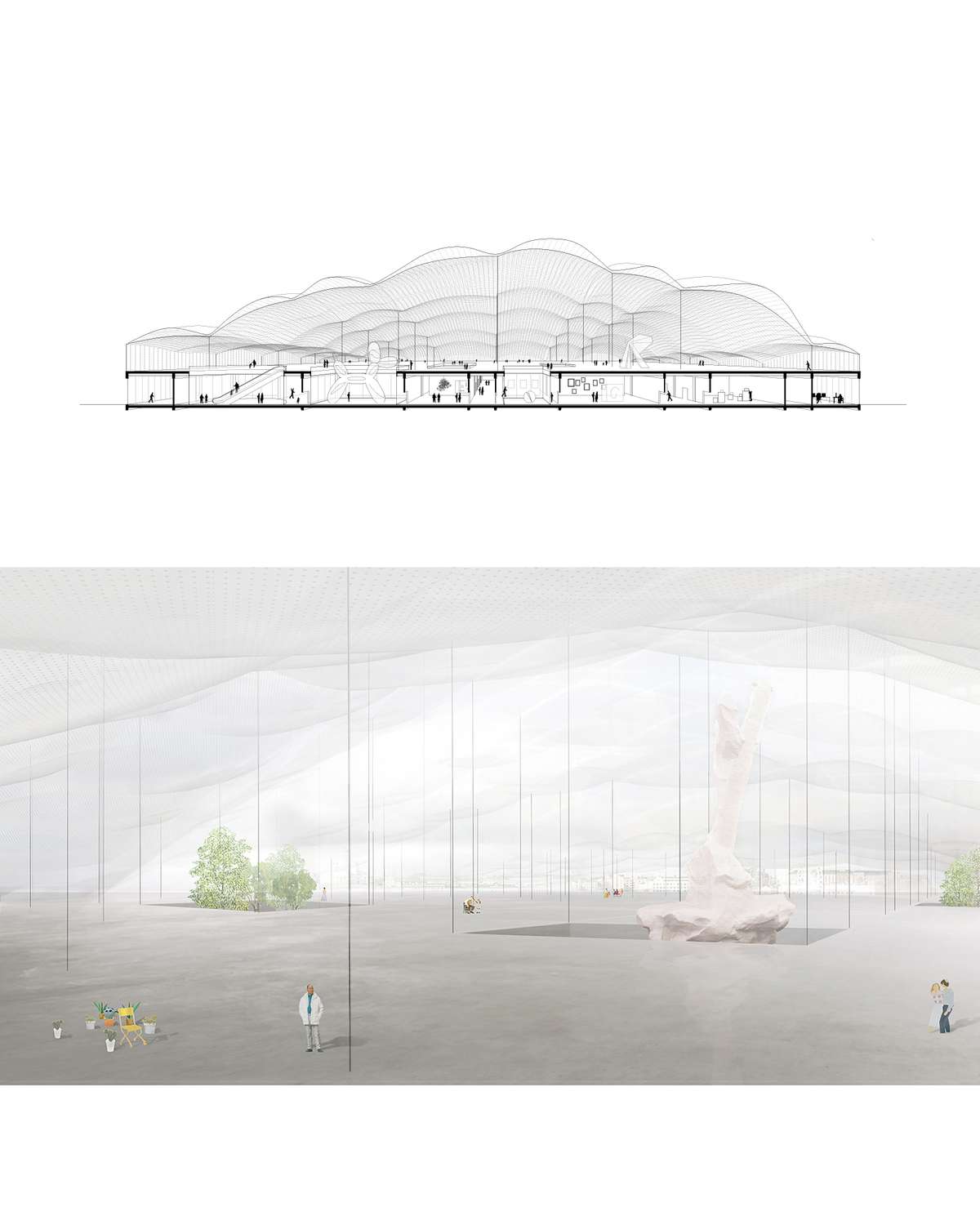
guggenheim museum, helsinki ( 2014 )
what is wrong with the ordinary museum?
as the production of art is seeing an enormous evolution in both scale and medium, new spaces and ways of considering the exhibition space is needed. contemporary art is becoming more and more concerned with space itself. the new museum has one enormous space. a cloud of a 1000 shapes. unlimited, but specific. a post-white-box-room, offering sheer space and flexibility.
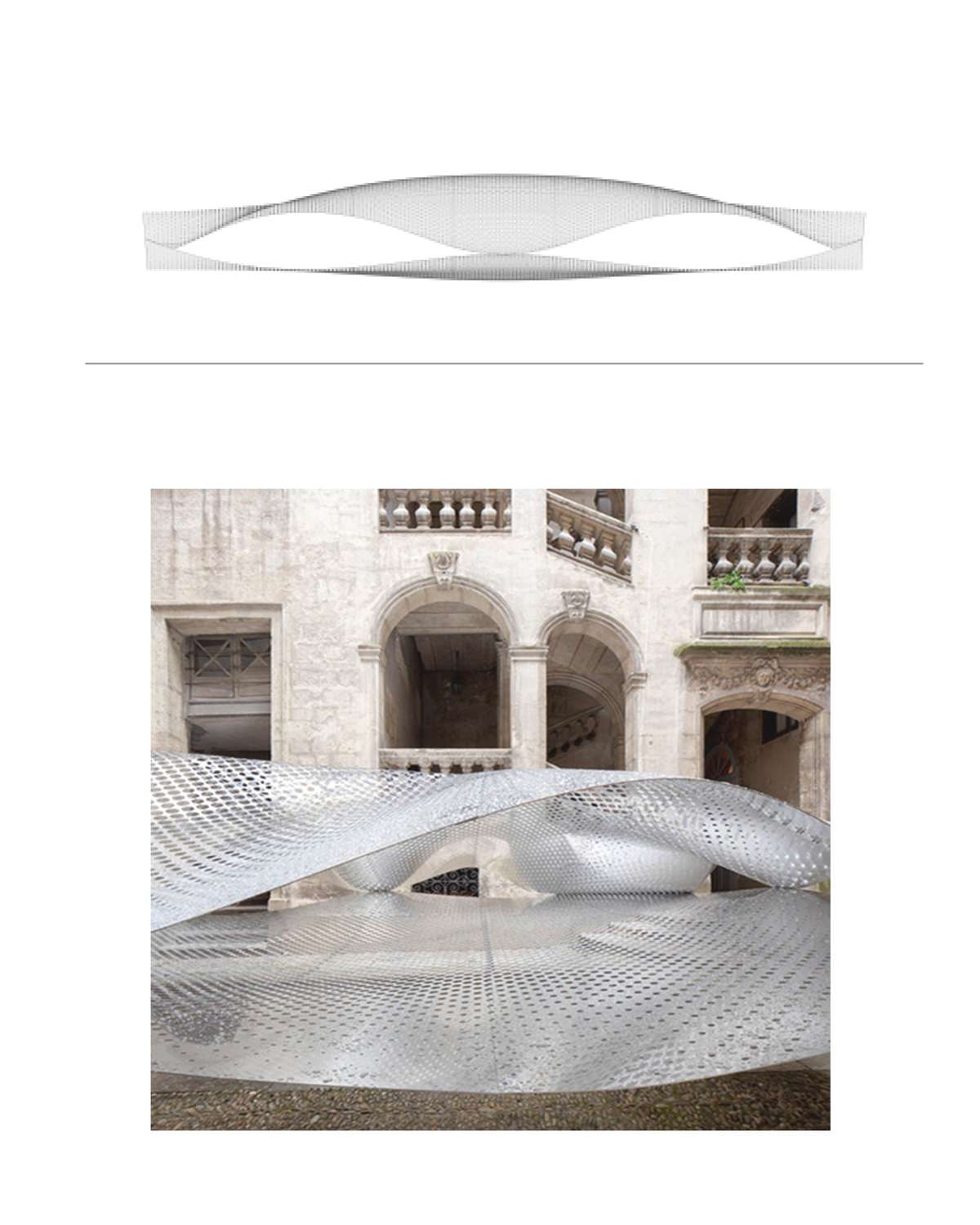
FAKT #034 is an installation piece realized in june 2015 in the courtyard 6 rue trésoriers de la bourse, montpellier / festival des architectures vives. the project works as a progressive experiment both spatially and structurally. its aluminum structure clear spans 6.4m x 4.5m with only two sheets of 2mm thickness each.
our proposal searches for an installation that overcomes the object but instead transcends into phenomenon.
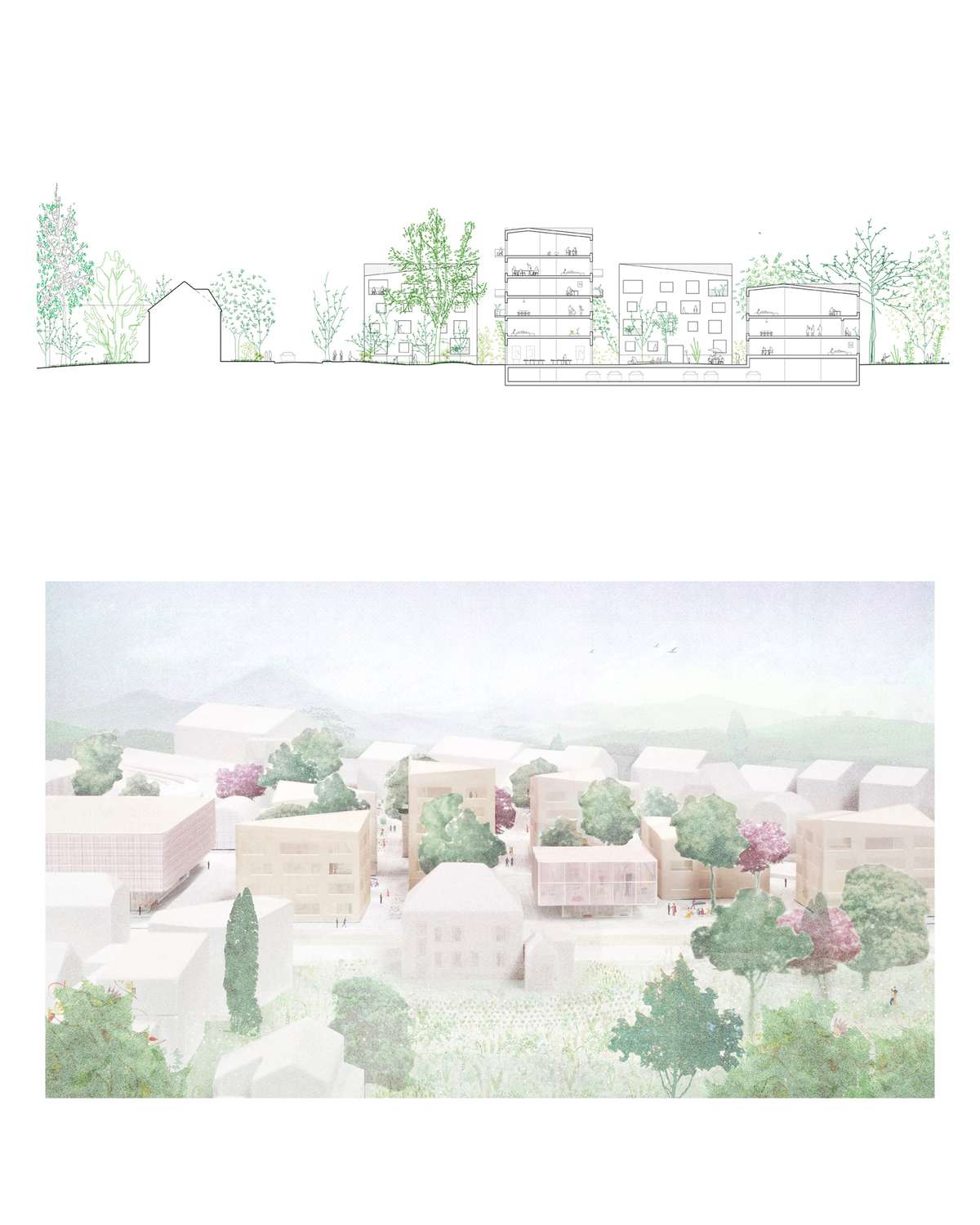
the project is organized as one field. buildings of varying height and depth alternate with open spaces of diverse nature and character. the structure is topological, in the sense that it defines spatial relationships that don’t exclusively depend on finite form. in this sequence of built and unbuilt, solid and hollow, housing and green, intensity doesn’t rely on one condition or the other, rather in the mutual reinforcement of each of these counterparts. the presence of nature is fundamental.
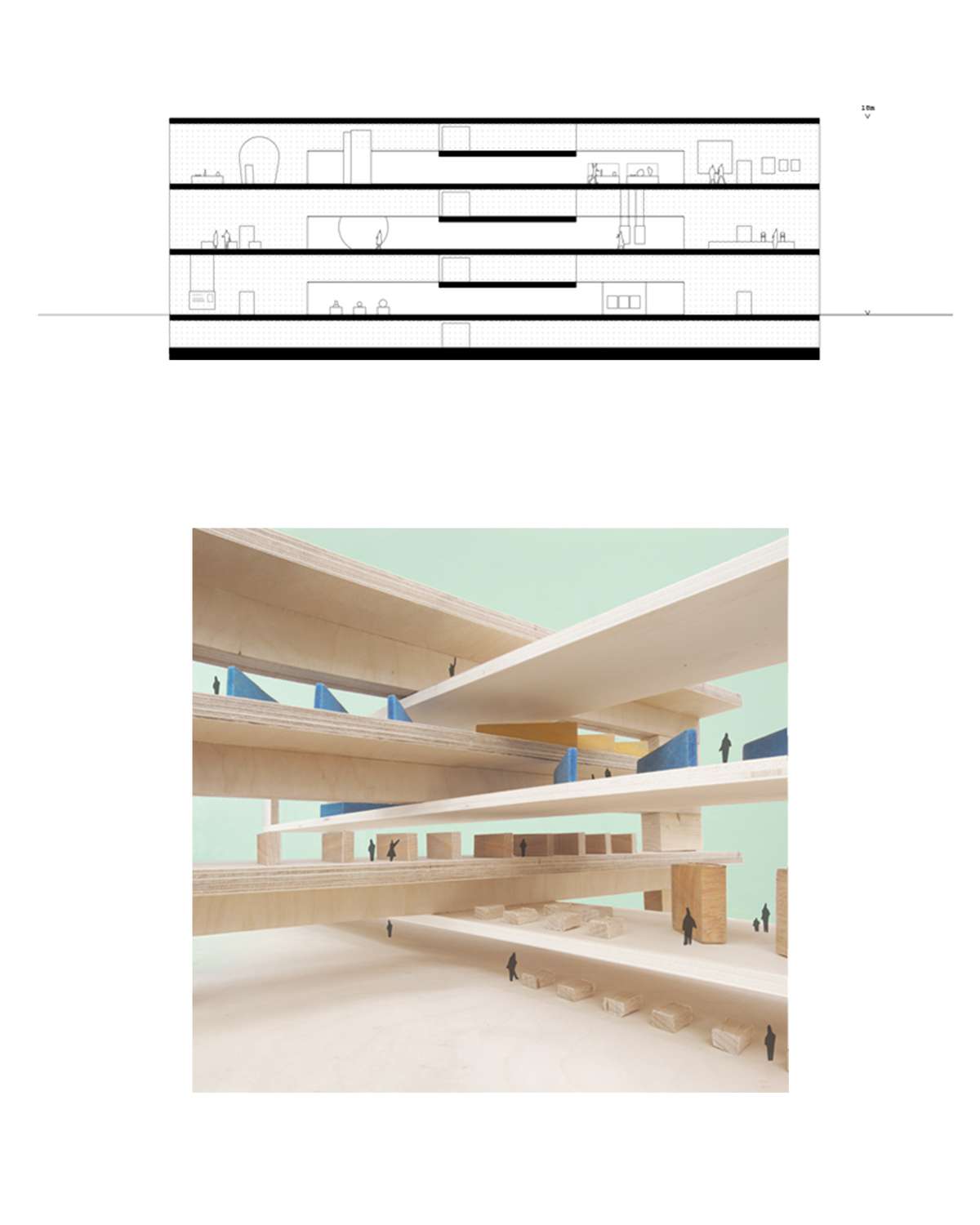
bauhaus museum, competition phase 2
dessau ( 2015 )
(images show phase 1 entry)
an open museum represents the everyday culture that bauhaus stands for and showcases the collection to the public. shifted levels allow for looks on the building itself from within the building. the different floors, although flexible in use, are dependent on each other. a visual and programmatic complexity is created. the museum acts as the icon of its program and represents those in their synchrony.
Softspace
Softspace

which are the necessities to create open spaces allowing for social change? to unify new or diverse social uses that until now have been separated, to create a social catalyzer? to reintroduce the notion of the sublime?
compressing program on the one hand allows for, on the other hand, large monospaces to be places of encounter and exchange, where all programs suitable for open space are arranged. the result is a dialectic spatial entity consisting of many compact spaces and one large space.
spatial landscapes, interdependent spaces, vertical permeation and poetic approaches are issues we are dealing with. redesigning the future of architecture by questioning the boarders of conventional building elements: perforated ceilings, roof as cloud, floor as landscape, structure as rhizome…
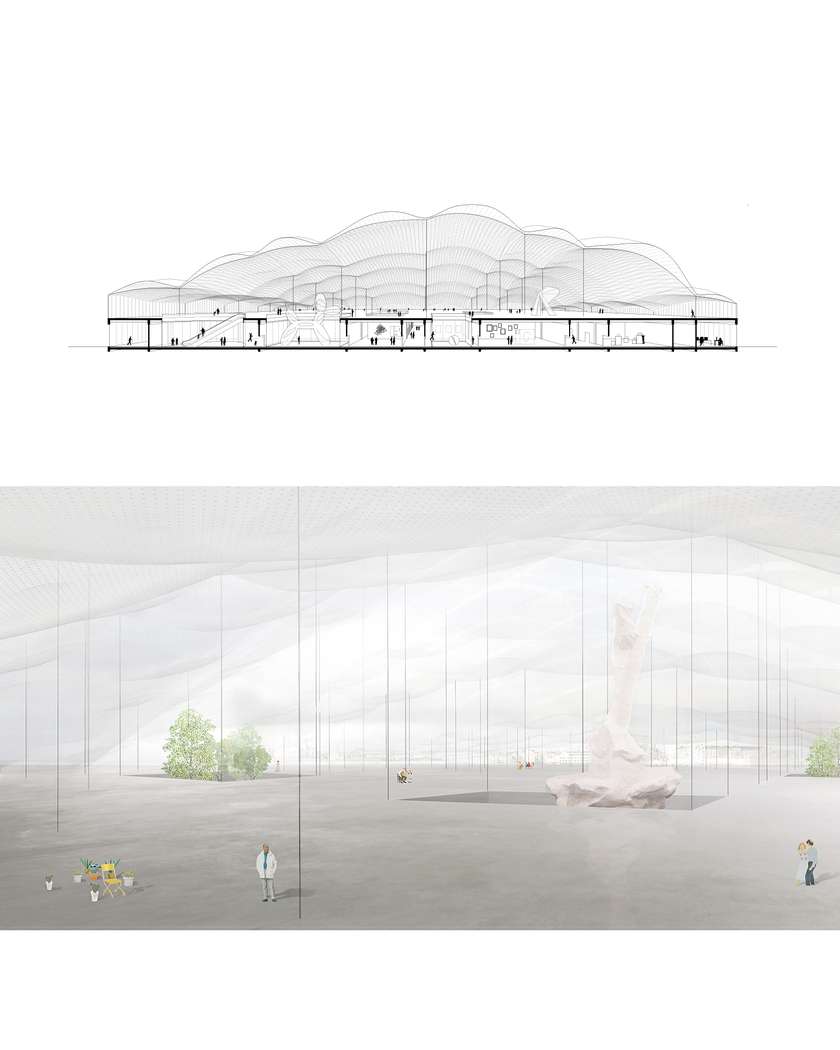
guggenheim museum, helsinki ( 2014 )
what is wrong with the ordinary museum?
as the production of art is seeing an enormous evolution in both scale and medium, new spaces and ways of considering the exhibition space is needed. contemporary art is becoming more and more concerned with space itself. the new museum has one enormous space. a cloud of a 1000 shapes. unlimited, but specific. a post-white-box-room, offering sheer space and flexibility.
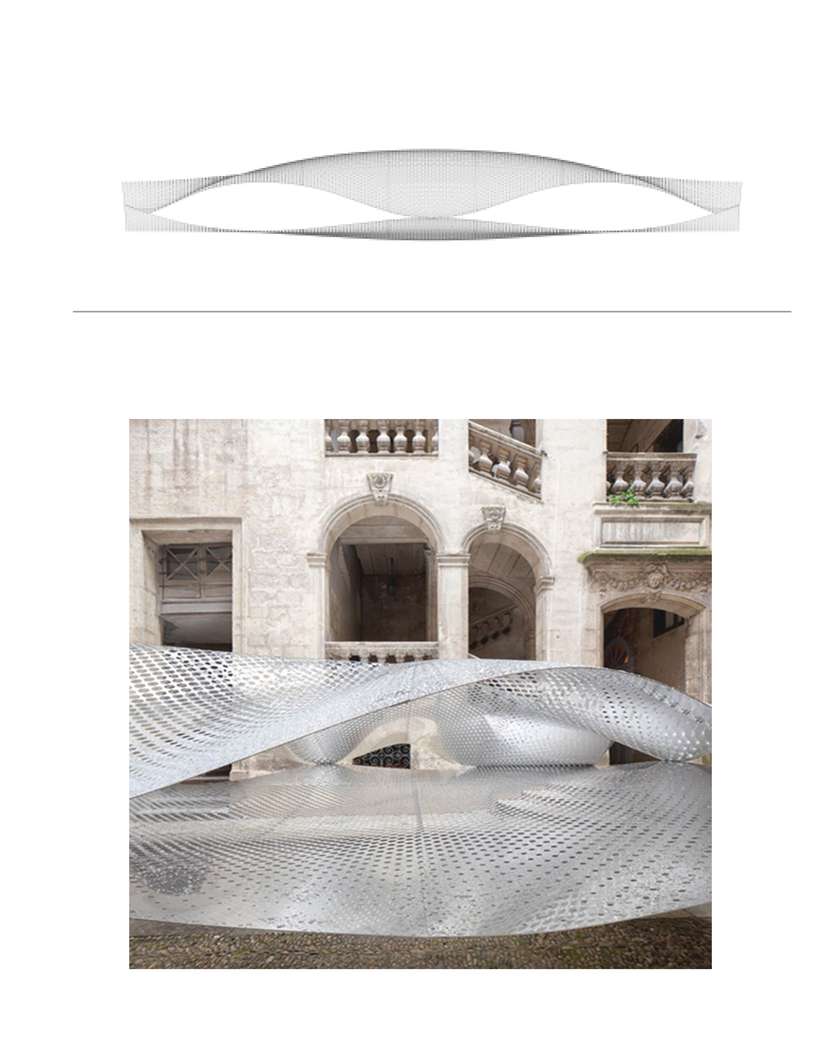
FAKT #034 is an installation piece realized in june 2015 in the courtyard 6 rue trésoriers de la bourse, montpellier / festival des architectures vives. the project works as a progressive experiment both spatially and structurally. its aluminum structure clear spans 6.4m x 4.5m with only two sheets of 2mm thickness each.
our proposal searches for an installation that overcomes the object but instead transcends into phenomenon.
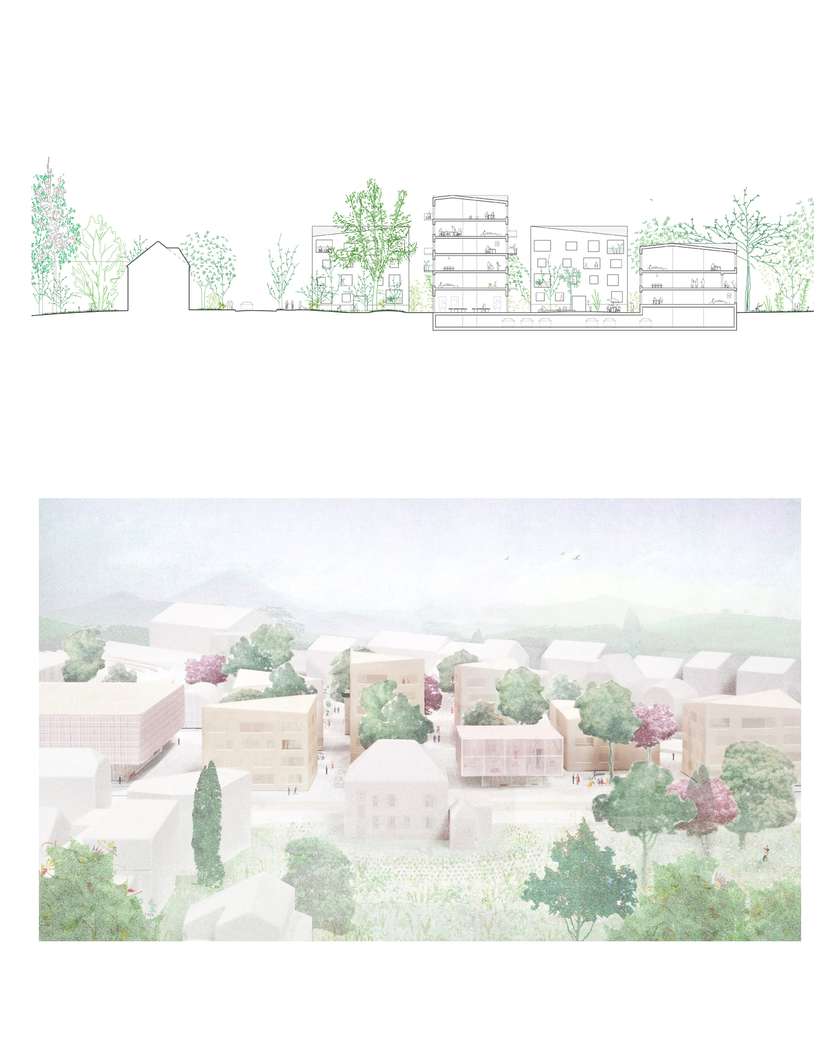
the project is organized as one field. buildings of varying height and depth alternate with open spaces of diverse nature and character. the structure is topological, in the sense that it defines spatial relationships that don’t exclusively depend on finite form. in this sequence of built and unbuilt, solid and hollow, housing and green, intensity doesn’t rely on one condition or the other, rather in the mutual reinforcement of each of these counterparts. the presence of nature is fundamental.
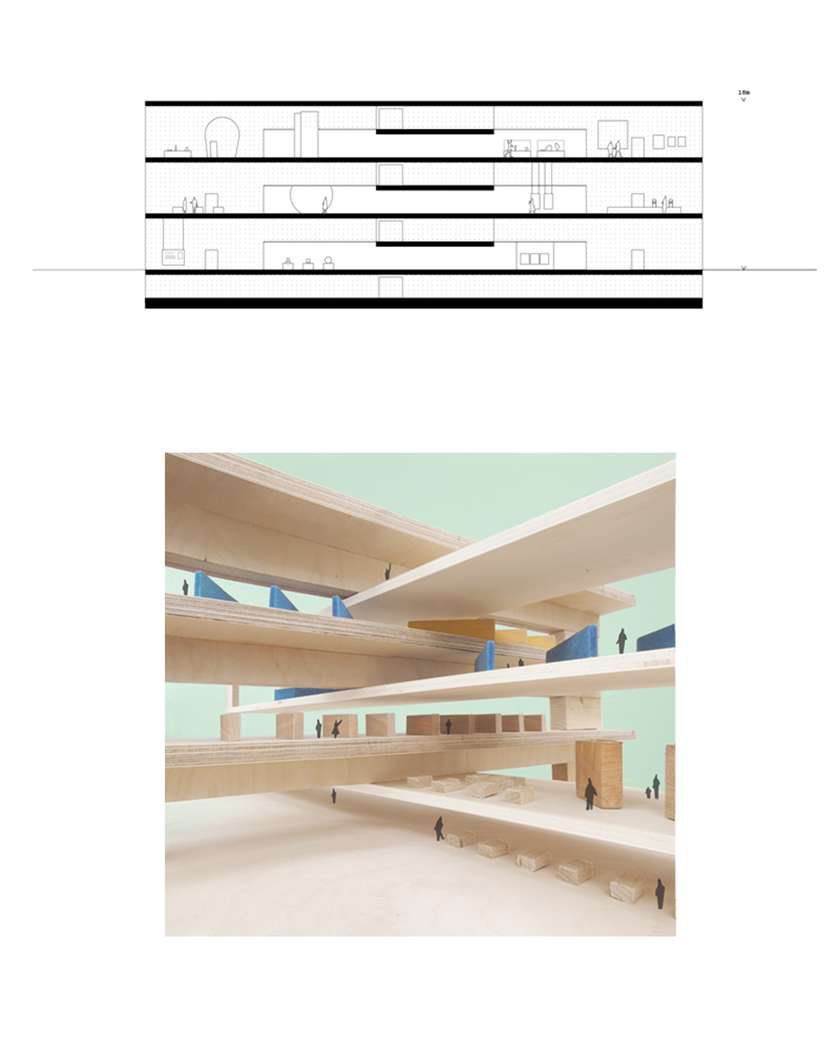
bauhaus museum, competition phase 2
dessau ( 2015 )
(images show phase 1 entry)
an open museum represents the everyday culture that bauhaus stands for and showcases the collection to the public. shifted levels allow for looks on the building itself from within the building. the different floors, although flexible in use, are dependent on each other. a visual and programmatic complexity is created. the museum acts as the icon of its program and represents those in their synchrony.